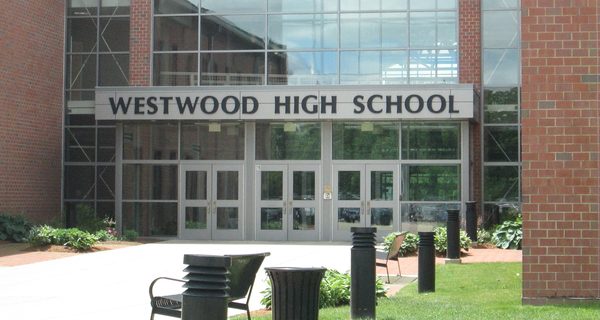By James Kinneen
Hometown Weekly Reporter
When discussing the emails she has received regarding how to reopen Westwood’s schools in the fall, Carol Lewis acknowledged: “based on the emails, we have received, it’s clear there are conflicting views on this topic and that there is no way we are ever going to move this community to a consensus.”
While that is undeniable, it is clear after listening to the School Committee and talking to various town officials that Westwood is heading to a hybrid, partly in-person, partly-remote school year in the fall. The reasons for this decision are numerous.
The number one issue is flexibility. While Westwood needs to submit plans for three separate models - in-person, Monday to Friday, with all students; completely online; and a hybrid of the two - one of the biggest issues is a need to be able to pivot from one to another. We’ve seen what a transition from in-person to completely remote looks like; it happened in the spring and it was a mess. If there is a surge in the fall and schools need to go online again, it’s a lot easier to transition from half online, half in-person to fully remote, than from completely in-person to completely online.
The other perceived advantage of the remote model is the ability to both socially distance and contact trace. When an extended day faculty member tested positive for COVID-19, Westwood’s contact tracing abilities were tested. When you think of how few students are in that program, it becomes clear that any plan that reduces the number of students inside a classroom will make contact tracing significantly easier. Ditto for the social distancing space needed for half the number of kids, both inside a school building and on the bus.
Other theoretical advantages of the hybrid model include a lesser stigma against students who choose to remain online only, and the ability for a sick student or a student awaiting a Covid test to simply join the online half of the student body, rather than risk coming into class or dealing with make-up assignments.
What would the hybrid model look like? Essentially, the Westwood student body would be split into two groups, or “cohorts,” who would attend school on alternating school days, with siblings being placed in the same cohort to make it easier for working parents. While the MIAA thinks fall sports can begin on September 14, this plan, designed to keep two specific groups of students from interacting with each other on a daily basis, does not bode well for team sports this fall.
Obviously, things can change quickly, but it is very clear this is the plan the Westwood School Committee is looking to pursue. Is it the best plan? Well, despite many parents best wishes, Superintendent Emily Parks made it very clear there was no “return to normal” option. For the full return model Westwood plans to submit (they have to submit a proposal for all three return options), school would end early to not have to deal with lunch, homeroom would be gone, and kids would move around the hallways a lot less. Whether the correct call or not, there’s no school reopening proposal that looks like September 2019.
As for remaining completely remote, while it’s an option if families want to do it regardless of which proposal Westwood opts for, it’s nearly universally hated. In a Westwood town survey, 75 percent of families favored some type of return, although there were many queries about how bad the HVAC systems were in some of the school buildings, and how things like mask mandates would be enforced. While there were lots of borderline caveat comments, among Westwood teachers, the number looking to return to class in some form was actually higher, at 80 percent. Parents noted how dependent a fully remote plan is on screen time, something Westwood has argued is very harmful to kids in the past, while working parents (who, to a large degree, are pushing for a return to normalcy) would be overwhelmed by a complete lack of childcare. As to what online learning will look like, the ideal scenario would be kids joining their classmates in class, digitally - but it was unclear if that could actually happen.
Part of the issue is that Superintendent Parks didn’t get the state support she was expecting. Essentially, throughout the summer, the Massachusetts Department of Elementary and Secondary Education (DESE) had told her they were going to come to her with strict guidelines, and that they would develop a statewide plan for school reopening. Unfortunately, the state instead suddenly decided in late June that local school boards and superintendents were actually the best people to make the decision for their school districts.
“The state, I don’t want to say punted,” Tony Mullin argued, while speaking about the state’s obvious punting on the issue, “but the state is giving us more local control than we thought a month ago.”
While Massachusetts is currently doing well, the uptick in positive cases around the country has dealt a blow to the reopening plan, as well. Currently, a teacher or student in Massachusetts is waiting about a week to ten days for their test results. Before outbreaks in other states, these numbers were faster, but test result sites around the country have developed a backlog. Obviously, the longer a teacher or student is waiting for test results, the longer they’re not in school. And with Massachusetts positive test rates in the single digits, there are presumably going to be a ton of teachers and students who could return to class after a negative rate much faster - providing the test results can speed up.
While Parks outlined a thorough plan, the teacher’s union could shoot it down for whatever reason they want. A change like this opens Westwood to collective bargaining, so while Parks was talking about making three feet of space happen - which is what DESE recommends - the Mass Teacher’s Union has been pretty vocal that they think anything under six feet is a non-starter. Although Parks claimed she has a good relationship with the teacher’s union and that “if Westwood can’t figure it out, I don’t think anyone can,” there are no guarantees.
With so much talk about the safety of the students and the mental health of the students, there’s been a weird lack of feedback from the students. I asked Ryan Kissell, a Westwood High student about fear of returning to school, and he said in part: “I’ve not heard any students say that they’re scared to return … I don’t personally know anyone that is considering not returning to school - if it’s an option to return … As much as I’d like to return to school, I trust that there are people that know more about the safety of this than I do.
“The school has been surveying students for their opinions, so we have had the opportunity to provide feedback.”
There’s nothing wrong with essentially going with the flow, but these are the same kids who were aggressively vocal - and far from willing to cede power to the “experts” - just a few weeks ago regarding mascot changes, statues, and police reform. It’s a bit odd how silent they’ve gone when the political debate of the week turned towards something that impacts them so specifically.
One of the issues is likely that the science is all over the place. Fans of a return to normal would point to a study from University of Edinburgh epidemiologist Mark Woolhouse, who recently claimed there are zero cases of a student giving COVID-19 to teacher anywhere in the world. People on the other side of the aisle would point to Israel, who many claim experienced a huge COVID reemergence after reopening their schools. Superintendent Parks had to deal with a much more local version of this, acknowledging that she has gotten many emails from Westwood parents that work in the medical fields, and while she appreciates the input and was quick to point out that she read every one, there was far from a consensus about what she should do.
As of right now, it looks like Westwood kids are heading towards a hybrid combination of in-class learning and online classes. Whether the union agrees, whether those plans change, and whether that was the correct decision, all remain to be seen.























